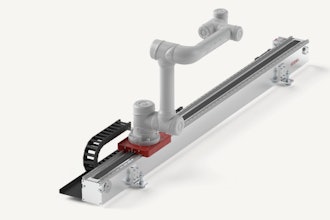
When the term ‘Great Resignation’ first entered our vernacular, with it came some panic. Reasonable, I’d say, when the prospect of a roaring demand was suddenly being paired with the inability to meet it.
And since the middle of last year, while scrambling to manage the prospect of a labor shortage, our society has collectively excelled, I’d say, at finger-pointing. I think we all know it’s been difficult to discuss this thorny issue without a shifting blame game - everything from federal benefits, low wages and sheer laziness being pegged as the primary driver.
And while time has passed, while we have yet to get a handle on it, we have learned a lot about the labor shortage and it’s clear that the nuance matters.
Jay L. Zagorsky, Senior Lecturer, Markets, Public Policy, and Law with Boston University’s Questrom School of Business recently questioned whether the dramatic language surrounding the labor market was, in fact, accurate. He took a look at individual quit rates by industry and determined that much of the turnover was driven by three main industries – Leisure and hospitality; Professional and business services; and Trade, transportation, and utilities. And while higher-than-average turnover is enough to drive these - and related - industries into upheaval, they were also enough to skew the results overall. For example, Zagorsky cites an average quit rate of three percent and says that the manufacturing sector has experienced a quit rate that’s actually lower: 2.3 percent in November.
He also takes issue with the proclaimed “record” levels of departures, pointing out that this data has only been collected since 2000 and its highly likely there were similar job markets in other eras of American history when the economy has been particularly strong.
And while Zagorsky acknowledges that quits are high right now, he encourages dispensing with the hyperbole and looking at the facts. One of these facts, he says, is that younger workers are job hopping the most. Zagorsky says this is the demographic mostly likely to do so at any time, and he and other experts are careful not to blame the current worker shortages on Millennials or Gen Z.
In a recent report in Forbes, John M. Bremen, Chief Innovation and Acceleration Officer for Willis Towers Watson, a multinational risk management, insurance brokerage and advisory company, asks stakeholders to look at the data before pinning the problem on this younger class of workers.
While no single generation seems to be to blame, Bremen says a demographic “perfect storm” was brewing even before the pandemic, with labor pools shrinking in several areas, including the entry level (16-24) and management (45-54) age groups.
Likewise, a CNN Business report cites data showing that retiring Baby Boomers, far more than "lazy" Millennials, are the biggest force behind the labor shortage.
In November, the report says, “there were 3.6 million more Americans who had left the labor force and said they didn't want a job compared with November 2019. A whopping 90% of them were over 55.”
With these points in mind, I think it’s clear that there are many grey areas to the labor market and, therefore, no easy answers. But one thing businesses would be smart to do is to disengage with the hype, stop with the blame game and look at their own organizations for answers.
According to Terri Mock, Chief Marketing and Strategy Officer at Rave Mobile Safety, some businesses have become so focused on recruiting to fill the gaps, they fail to address the critical needs of existing employees – the results of which can be more departures.
Mock says manufacturers should create best practices around checking in on employee well-being and should use technology to help facilitate those measures. These might include:
The importance of daily health checks: By sending out a daily health questionnaire directly to an employee’s phone, manufacturers can prevent spread by screening if an employee is sick before they come to work their shift.
How to poll to fill shifts: Once manufacturers know who can and can’t come into work, they can use polling features in mass notification solutions to quickly see who may be available to work overtime, ensuring proper coverage.
Why it’s important to communicate quickly and often: Ensuring that manufacturers have the tools in place to communicate quickly with employees – whether about the coronavirus or another emergency – can help get them information they need to stay safe and efficient.
So as we review the realities of the “Great Resignation,” I think the true needs of many businesses are multi-faceted. Even if the quit rate in manufacturing is lower than average, it’s in the context of the need to backfill everything from skilled to entry level positions – even those gaps that may have existed pre-pandemic. But mining for the details can yield benefits in terms of what problems we really face and how to solve them. And as Deloitte and the Manufacturing Institute recently pointed out, there are basic steps that existed long before we’d heard this “Great” term.
“While training and reskilling to meet the demands of today’s digitally enabled work are part of the solution, according to our research, more focus needs to be given to the analog side of the business as well,” Deloitte says. “Initiatives can include making it easier for entry-level employees to get in the door via apprenticeships, making the workplace more welcoming for a more diverse workforce, and building pathways to the future of work.”























